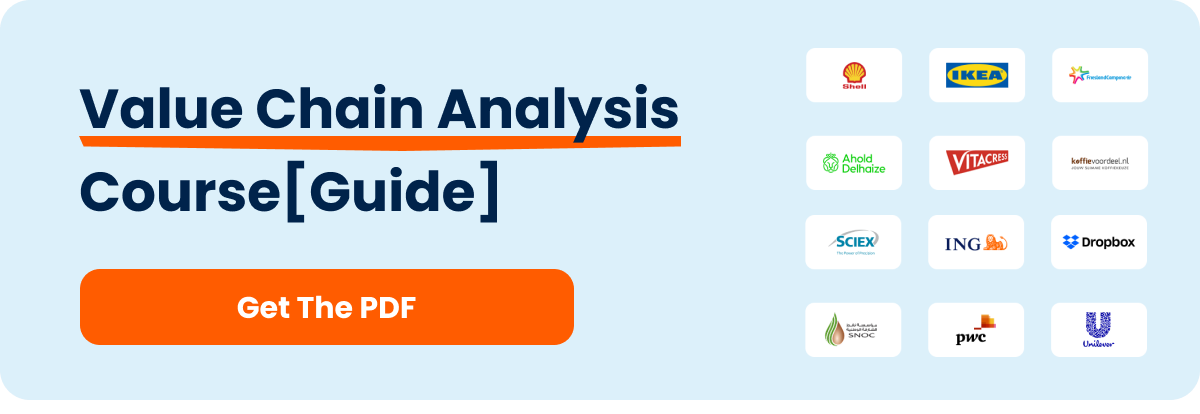Written by Marijn Overvest | Reviewed by Sjoerd Goedhart | Fact Checked by Ruud Emonds | Our editorial policy
Plan For Every Part (PFEP) — Planning Your Procurement for 2025
Key takeaways
- PFEP is a supply chain management concept focusing on a company’s inventory optimization.
- An extensive PFEP moderates production, improves operational resilience and strengthens supplier relationships.
- For the company’s supply chain optimization to successfully implement PFEP, modern procurement approaches must be adopted.
PFEP, or “Plan for Every Part,” provides solutions for optimizing inventory and supply chain processes.
It involves a comprehensive planning approach facilitating supply chain visibility and excess inventory reduction. Consequently, this process helps to avoid spending risks and maximize operational efficiency.
PFEP fosters a company’s adaptability to market changes and enforces a robust supply chain operation by fostering supplier relationships and service quality.
This article provides information on what it is. It also discusses why planning is crucial in your company’s supply chain.
Exploring the PFEP’s significance and benefits is crucial to promoting a dynamic company approach and competitiveness in the fast-paced procurement landscape.
What is Plan For Every Part (PFEP)?
PFEP, or “Plan For Every Part,” is a supply chain management concept focusing on a company’s inventory optimization. Additionally, it improves the company’s supply chain process, resulting in better operations.
This plan focuses on comprehensive information, market forecasts, lead times, and inventory requirements.
Developing a PFEP for the company can result in better supply chain visibility. Moreover, it reduces excess inventory, minimizes stock errors, and avoids unnecessary purchases like Maverick spending.
It requires the company’s departments, including logistics, purchasing, production, and procurement, to collaborate for an efficient procurement process.
PFEP also involves technological incorporation, such as supplier performance management software and digital procurement systems, to facilitate expansive data.
This implementation enhances cost savings, reduces service delays, and improves supplier communications. Consequently, this process improves customer satisfaction and supplier relationships.
PFEP is a crucial tool for companies to optimize their supply chain management, ensuring better operations in the business environment.
Why is PFEP important?
PFEP is crucial for improving company operations, especially the supply chain management. Essentially, this planning encourages companies to achieve an agile and cost-effective approach to their supply chain.
PFEP results in process optimization, focusing on customer responsiveness and approach in the dynamic market environment. Having this extensive planning has its perks in supply chain implementation. Below are the crucial aspects of PFEP to have in your company:
1. Comprehensive Understanding
This planning provides companies with an extensive understanding of inventory components. Consequently, it enables the company to expand its planning and improve supply chain management.
This approach supports excess minimization and supply chain risk reduction. Extensive detail also gives the company more accurate data, ensuring operational clarity and easier supply management.
2. Fostering Collaboration
It enhances departmental communication and collaboration, ensuring faster and more accurate data sharing. This process improves decision-making processes, increasing the chance of better results.
Moreover, it aligns production schedules and streamlines procurement processes. Ultimately, it contributes to operational efficiency and a smoother supply chain process.
3. Adaptability
PFEP improves the company’s adaptability by providing a comprehensive market assessment and current dynamics.
It enables company departments to plot procurement strategies, evaluate current data, and enhance competitiveness against rival companies.
It also maintains customer interest by providing according to their changing needs.
The Different Uses of PFEP
PFEP enables a strategic supply management approach revolving around planning component details and organizing company inventory.
This process aims to optimize inventory levels and provide a comprehensive understanding of its characteristics. It allows companies to make better decisions and craft their supply chain accordingly in the dynamic business environment.
Below are four uses of PFEP in your company’s supply chain operations:
1. Inventory Optimization
It provides companies with data to formulate plans for their supply chain. The process helps them optimize their inventory levels, reducing the risk of stockouts and aligning inventory with accurate demand.
This process enables them to achieve efficiency without worrying about overspending or unnecessary financial burden.
2. Streamlining Production Processes
This planning contributes to streamlining production processes, ensuring faster service delivery. Companies using PFEP can experience better supply chain performance through effective strategy planning and comprehensive market positioning.
Consequently, the process creates a better response window to act on the ever-changing market demands. It also enables the company to recognize supply chain innovation and development opportunities.
3. Continuous Process Development
PFEP provides a robust foundation for developing data analysis and supply chain optimization. Regular reviews and evaluations can help companies identify optimization opportunities and spending reductions while maintaining efficiency.
This process contributes to a more responsive and agile supply chain. Consequently, it also eases the supply response, ensuring faster services and a more secure approach.
4. Facilitating Rapid Adaptation to Changes
This planning equips companies with tools, enabling them to adapt to market changes. It also helps them identify supply chain disruptions, reduce delays, and enhance their response time.
Moreover, it helps them make better decisions, leading to better production schedules, manageable inventories, and efficient procurement operations. The planning is crucial for the company’s supply chain to remain adaptive and competitive in the procurement landscape.
Setting up a PFEP
Setting it up requires a systematic step-by-step process to manage the company’s inventory. Understanding what to monitor in the company’s inventory is crucial to strategizing and building your supply chain planning.
Following these steps enforces the company’s supply chain and contributes to overall procurement efficiency.
Below is the step-by-step process to set up a PFEP in your company:
1. Identifying Objectives
Outlining company goals and objectives is crucial to define the PFEP’s extent. Determining which parts to include and identifying the specific goals can help reduce unnecessary effort and maximize the planning’s potential. Doing so enhances optimization and the benefits your company can receive from it.
2. Team Planning
Establishing a team involving various department representatives supports better data collaboration and effective decision-making. This team ensures a comprehensive plan implementation while maintaining a diverse quality approach. Moreover, having a specific team managing this plan can reduce confusion and increase focus on its success.
3. Data segmentation
This planning requires various information to create comprehensive data for the plan’s framework. These data include market forecasts, lead times, storage requirements, and supplier data. Doing so helps define the objectives better and clarify the planning to ensure the team understands how to maximize the PFEP in the company.
4. Technological Implementation
Procurement Digital Transformation moves modern procurement towards better results. Implementing technology solutions to the company’s planning helps facilitate the various data. It also streamlines the plotting process and provides visibility with the current information. Ultimately, the technology simplifies the process and reduces manual error.
5. Establish Communication Protocols
Developing communication protocols in the planning process is crucial to avoid discrepancies and errors in implementation. This process ensures the team shares relevant information that benefits the company and this process. Failure to do so may impact the supply chain and the company’s performance.
PFEP Examples
Implementing PFEP is a crucial methodology in the supply chain to optimize material and information flow.
This process helps companies avoid potential threats by planning each part of the production process. Below are three examples that maximize the PFEP implementation.
1. Amazon
Amazon relies on a complex supply chain to deliver its products to customers globally. The company implements technology to manage each component of its supply chain, ensuring efficient deliveries.
Moreover, Amazon minimizes disruptions by maintaining communication and updating its logistics to current standards. Amazon’s supply chain practices reflect a PFEP commitment, pushing a comprehensive strategy planning.
2. Toyota
Toyota emphasizes its waste reduction and optimization processes through a lean production system. The company focuses on the efficiency of its production process by looking through each part’s effectiveness.
Toyota ensures the PFEP process aligns with its objectives and goals, maximizing the planning benefits. Through the company’s “Toyota Way,” the supply chain faces minimal risks and achieves success with efficiency.
3. Procter & Gamble (P&G)
P&G implements various supply chain management practices to ensure efficiency and cost reduction. The company emphasizes the need for effective planning of each production part to achieve a smooth material flow.
Through PFEP, P&G delivers product quality while maintaining timely services. P&G’s commitment to standards proves the importance of organizing procurement activities to avoid delays and issues.
Conclusion
In conclusion, Plan for Every Part develops a company’s efficient supply chain management.
It offers companies a comprehensive strategizing towards inventory optimization and risk minimization. Doing so enhances their supplier collaboration, ensuring procurement success.
PFEP also streamlines production processes and facilitates market change adaptation of the companies. Additionally, it contributes to continuous company development, fostering growth and success.
This planning also incorporates technological adaptation and modern procurement planning, improving a company’s competitive edge against rivals who still use traditional processes. Companies like Amazon, Toyota, and P&G exhibit the successful implementation of PFEP, helping them achieve supply chain stability and procurement success.
Adapting planning strategies such as PFEP in the procurement landscape is crucial to achieving operational efficiency and maintaining a competitive edge in the business environment.
Frequentlyasked questions
What is the PFEP?
PFEP, or “Plan For Every Part,” is a supply chain management concept focusing on a company’s inventory optimization.
Why is PFEP Important?
PFEP is crucial for improving company operations, especially the supply chain management. Essentially, this planning encourages companies to achieve an agile and cost-effective approach to their supply chain.
What are the Different uses of PFEP?
The different uses of PFEP are for Inventory Optimization, Streamlining Production Processes, Continuous Process Development, and Facilitating Rapid Adaptation to Changes.
About the author
My name is Marijn Overvest, I’m the founder of Procurement Tactics. I have a deep passion for procurement, and I’ve upskilled over 200 procurement teams from all over the world. When I’m not working, I love running and cycling.







